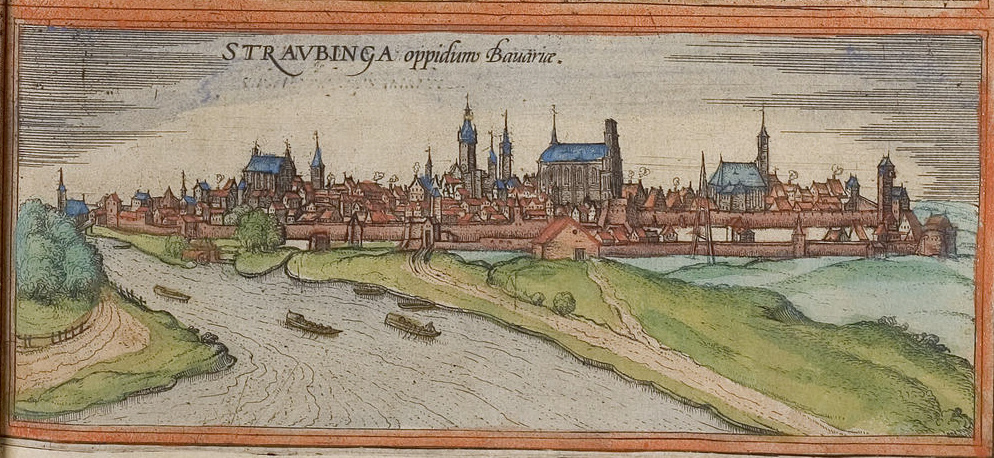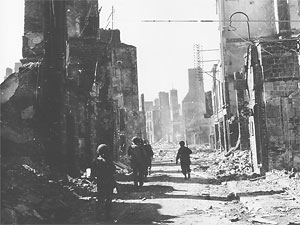|
Helmut Bergmann
Helmut Bergmann (26 May 1920 – 6 August 1944) was a German Luftwaffe military aviator during World War II, a night fighter ace credited with 36 enemy aircraft shot down in 135 combat missions. For a list of Luftwaffe night fighter aces see ''List of German World War II night fighter aces''. All of his victories were claimed over the Western Front in nocturnal Defense of the Reich missions against the Royal Air Force's Bomber Command. Born in Bochum, Bergmann volunteered for military service in the Luftwaffe of Nazi Germany in 1939 after finishing school. Following flight training, he was initially posted to ''Nachtjagdgeschwader'' 1 (NJG 1—1st Night Fighter Wing) in 1941 before he transferred to ''Nachtjagdgeschwader'' 4 (NJG 4—4th Night Fighter Wing). He claimed his first aerial victory on 19/20 September 1942 and was awarded the Knight's Cross of the Iron Cross on 9 June 1944. Two months later, on 6 August 1944, he and his crew were killed in action during ... [...More Info...] [...Related Items...] OR: [Wikipedia] [Google] [Baidu] |
Bochum
Bochum ( , also , ; wep, Baukem) is a city in North Rhine-Westphalia. With a population of 364,920 (2016), is the sixth largest city (after Cologne, Düsseldorf, Dortmund, Essen and Duisburg) of the most populous Germany, German federal state of North Rhine-Westphalia and the List of cities in Germany by population, 16th largest city of Germany. On the Ruhr Heights (''Ruhrhöhen'') hill chain, between the rivers Ruhr (river), Ruhr to the south and Emscher to the north (tributaries of the Rhine), it is the second largest city of Westphalia after Dortmund, and the fourth largest city of the Ruhr after Dortmund, Essen and Duisburg. It lies at the centre of the Ruhr, Germany's largest urban area, in the Rhine-Ruhr, Rhine-Ruhr Metropolitan Region, and belongs to the Arnsberg (region), region of Arnsberg. Bochum is the sixth largest and one of the southernmost cities in the Low German dialect area. There are nine institutions of higher education in the city, most notably the Ruhr Unive ... [...More Info...] [...Related Items...] OR: [Wikipedia] [Google] [Baidu] |
Western Front (World War II)
The Western Front was a European theatre of World War II, military theatre of World War II encompassing Denmark, Norway, Luxembourg, Belgium, Netherlands, the Netherlands, the United Kingdom, France, and Germany. The Italian campaign (World War II), Italian front is considered a separate but related theater. The Western Front's 1944-1945 phase was officially deemed the European Theater of Operations, United States Army, European Theater by the United States, whereas Italy fell under the Mediterranean Theater of Operations, United States Army, Mediterranean Theater along with North Africa. The Western Front was marked by two phases of large-scale combat operations. The first phase saw the capitulation of Luxembourg, Netherlands, Belgium, and France during May and June 1940 after their defeat in the Low Countries and the northern half of France, and continued into an air war between Germany and Britain that climaxed with the Battle of Britain. The second phase consisted of large- ... [...More Info...] [...Related Items...] OR: [Wikipedia] [Google] [Baidu] |
Blind Flying
In aviation, instrument flight rules (IFR) is one of two sets of regulations governing all aspects of civil aviation aircraft operations; the other is visual flight rules (VFR). The U.S. Federal Aviation Administration's (FAA) ''Instrument Flying Handbook'' defines IFR as: "Rules and regulations established by the FAA to govern flight under conditions in which flight by outside visual reference is not safe. IFR flight depends upon flying by reference to instruments in the flight deck, and navigation is accomplished by reference to electronic signals." It is also a term used by pilots and controllers to indicate the type of flight plan an aircraft is flying, such as an IFR or VFR flight plan. Basic information Comparison to visual flight rules It is possible and fairly straightforward, in relatively clear weather conditions, to fly an aircraft solely by reference to outside visual cues, such as the horizon to maintain orientation, nearby buildings and terrain features for n ... [...More Info...] [...Related Items...] OR: [Wikipedia] [Google] [Baidu] |
Cheb
Cheb (; german: Eger) is a town in the Karlovy Vary Region of the Czech Republic. It has about 30,000 inhabitants. It lies on the river Ohře. Before the 1945 Expulsion of Germans from Czechoslovakia, expulsion of the German-speaking population, the town was the centre of the German-speaking region known as Egerland, part of the Northern Austro-Bavarian dialect area. The town centre is well preserved and is protected by law as an Cultural monument (Czech Republic)#Monument reservations, urban monument reservation. Administrative parts Cheb is divided into the following parts: * Bříza * Cetnov * Cheb * Chvoječná * Dolní Dvory * Dřenice * Háje * Horní Dvory * Hradiště * Hrozňatov * Jindřichov * Klest * Loužek * Pelhřimov * Podhoří * Podhrad * Skalka * Střížov * Tršnice Name and etymology The name of the town was in 1061 recorded as ''Egire''; in 1179 it was known as ''Egra''; from 1322 as ''Eger'' and the surrounding territory as ''Regio Egere'' and ''Provin ... [...More Info...] [...Related Items...] OR: [Wikipedia] [Google] [Baidu] |
Straubing
Straubing () is an independent city in Lower Bavaria, southern Germany. It is seat of the district of Straubing-Bogen. Annually in August the Gäubodenvolksfest, the second largest fair in Bavaria, is held. The city is located on the Danube forming the centre of the Gäuboden. History The area of Straubing has been continuously settled since the Neolithic. The conquest by the Romans in 16–14 BC had a dramatic impact on the whole region. Even today many traces of the 400-year Roman occupation can be found: for example, the famous 'Römerschatz' (Roman treasure) which was excavated in 1950 and which is shown in the Gäubodenmuseum. ''Sorviodurum'', as the Romans called it, was an important military support base. After the fall of the Roman Empire Straubing became a centre of settlement of the Bavarii, mostly around St. Peter's Church (built in the 9th century) between Allachbach and Danube. According to the customs of the Bavarii the settlement was named after their leader ''S ... [...More Info...] [...Related Items...] OR: [Wikipedia] [Google] [Baidu] |
Recruit Training
Military recruit training, commonly known as basic training or boot camp, refers to the initial instruction of new military personnel. It is a physically and psychologically intensive process, which resocializes its subjects for the unique demands of military employment. Major characteristics Initial military training is an intensive residential programme commonly lasting several weeks or months, which aims to induct newly recruited military personnel into the social norms and essential tasks of the armed forces. Common features include foot drill, inspections, physical training, weapons training, and a graduation parade. The training process resocializes recruits to the demands made of them by military life. Psychological conditioning techniques are used to shape attitudes and behaviours, so that recruits will obey all orders, face mortal danger, and kill their opponents in battle. According to an expert in United States military training methods, Dave Grossman, recruit ... [...More Info...] [...Related Items...] OR: [Wikipedia] [Google] [Baidu] |
Hitler Youth
The Hitler Youth (german: Hitlerjugend , often abbreviated as HJ, ) was the youth organisation of the Nazi Party in Germany. Its origins date back to 1922 and it received the name ("Hitler Youth, League of German Worker Youth") in July 1926. From 1936 until 1945, it was the sole official boys' youth organisation in Germany and it was partially a paramilitary organisation. It was composed of the Hitler Youth proper for male youths aged 14 to 18, and the German Youngsters in the Hitler Youth ( or "DJ", also "DJV") for younger boys aged 10 to 14. With the surrender of Nazi Germany in 1945, the organisation ''de facto'' ceased to exist. On 10 October 1945, the Hitler Youth and its subordinate units were outlawed by the Allied Control Council along with other Nazi Party organisations. Under Section 86 of the Criminal Code of the Federal Republic of Germany, the Hitler Youth is an "unconstitutional organisation" and the distribution or public use of its symbols, except for educ ... [...More Info...] [...Related Items...] OR: [Wikipedia] [Google] [Baidu] |
Major (Germany)
() is the lowest staff officer rank in the German Army, German Air Force. The rank is rated OF-3 in NATO. The rank insignia is a silver oakleaf cluster with a silver pip (star). The OF-3 equivalent of the German Navy is the . History The rank in German-speaking armed forces dates back to the Middle Ages. World War II During World War II, the SS equivalent was ''Sturmbannführer''. Current rules To be appointed to the rank of , the officer has to pass a staff officer basic course () which is held at the German Armed Forces Command and Staff College (), and serve in a post coded A13 or A13/A14. In the German Army and the Joint Support Service (), the waiting period between meeting the requirements for promotion and actual promotion to the rank of averages 15 months due to budget problems (as of July 2010). See also * Ranks of the German Bundeswehr * Rank insignia of the German Bundeswehr * Comparative military ranks of World War I * Comparative military ranks of World ... [...More Info...] [...Related Items...] OR: [Wikipedia] [Google] [Baidu] |
Operation Lüttich
Operation Lüttich (7–13 August 1944) was the codename of the Nazi German counter-attack during the Battle of Normandy, which occurred near U.S. positions near Mortain, in northwestern France. ''Lüttich'' is the German name for the city of Liège, Belgium. In British and American histories of the Second World War, the German Operation Lüttich is known as the Mortain counter-attack, which Hitler ordered to regain territory gained by the First United States Army during Operation Cobra by reaching the coast of the Avranches region, which is at the base of the Cotentin peninsula, in order to isolate the units of the Third United States Army that had advanced into Brittany. The Germans' main force was the XLVII Panzer Corps, with two ''Heer'' and one-and-a-half ''Waffen-SS'' Panzer Divisions. Despite initial success against the defending U.S. VII Corps, the Germans were soon halted, and the Allies inflicted severe losses on the attacking troops, eventually destroying most of the G ... [...More Info...] [...Related Items...] OR: [Wikipedia] [Google] [Baidu] |
Nachtjagdgeschwader 1
1 (NJG 1) was a German night fighter-wing of World War II. NJG 1 was formed on 22 June 1940 and comprised four (groups). NJG 1 was created as an air defence unit for the Defence of the Reich campaign; an aerial war waged by the against the bombing of the German Reich by RAF Bomber Command and the United States Air Force. In 1941 airborne radar was introduced with radar operators, and standardised in 1942 and 1943. Consequently, a large number of German night fighter aces existed within NJG 1. NJG 1 operated all of the major twin-engine night fighters produced by German industry during the war. It fought in notable campaigns, such as the Battle of the Ruhr and Battle of Berlin. By the end of the war, lack of fuel, technical setbacks, lack of training and advances by the Allied powers rendered the night force ineffective from August 1944 until the end of the war in May 1945. NJG 1 was the most successful night fighter wing and had claimed some 2,3 ... [...More Info...] [...Related Items...] OR: [Wikipedia] [Google] [Baidu] |








